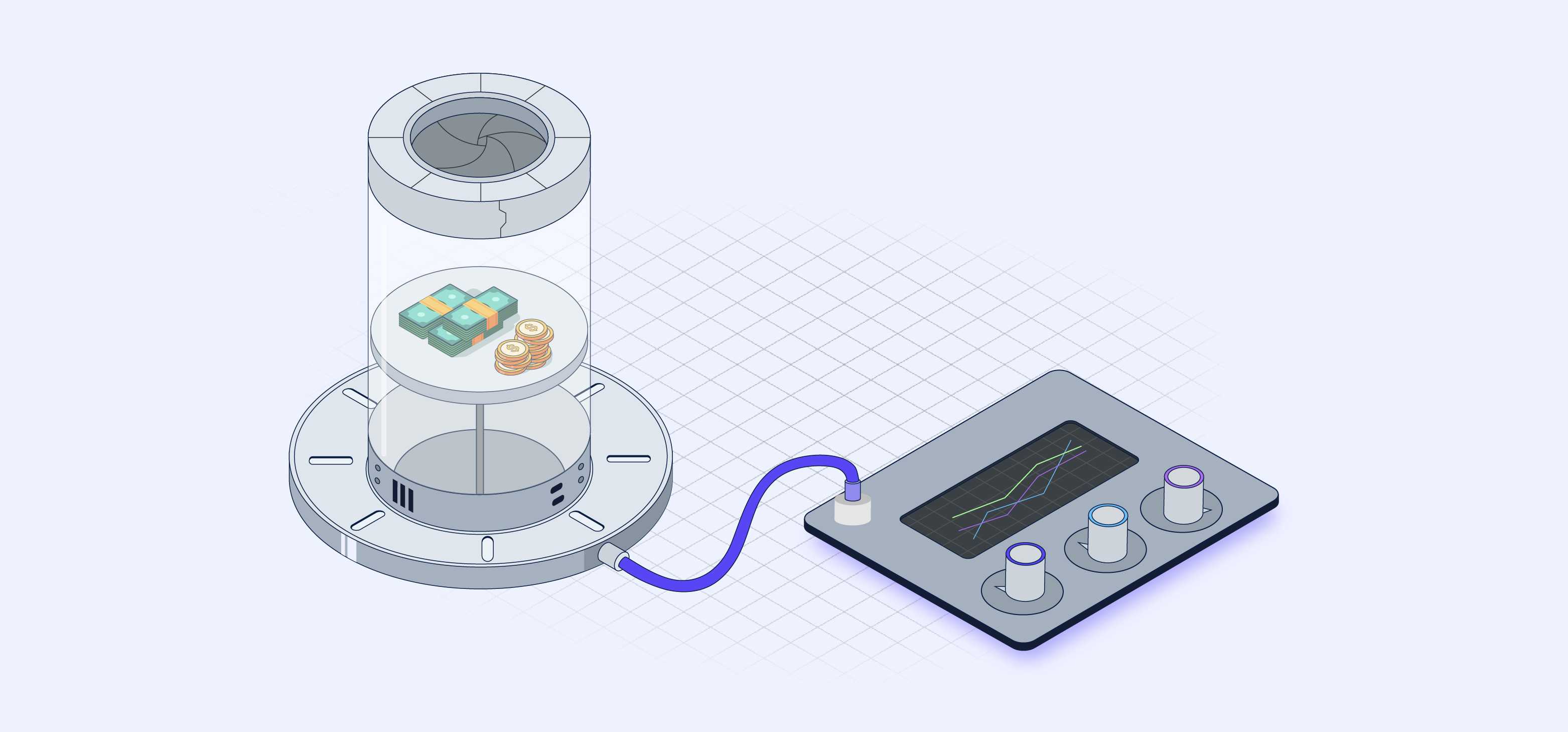Mastering the art of budgeting can make or break your success in the SaaS industry. In this article, we'll show you everything you need to know about budget variances and how to minimize them.
Budgeting is crucial for managing finances in SaaS companies, but getting your budget accurate can be challenging.
Just how challenging it is for your business will become evident when you create a variance report, which identifies the differences between your projected budget and your actual expenses. Those differences are your budget variance.
Of course, we’d all like to avoid budget variances. However, while variances are common in business, they’re not all created equal. Some are significant and need attention while others may be small, falling into a range you consider acceptable for your business.
This said, budget variances – whether a favorable variance or an unfavorable variance – should be minimized to the extent possible.
For one thing, conducting a variance analysis to figure out why variances occur and their main causes can be very time consuming if you have multiple variances to investigate.
More importantly, however, is the fact that large variances can alarm investors. For one thing, they suggest you’re not good at controlling your costs.
Accurate market predictions play a big role in forecasting. Therefore, large variances can also indicate a lack of understanding of your business and market.
While you may have some uncontrollable budget variances, investors will expect that you have a good handle on overall business conditions and the costs of running your company.
This article will show you how to minimize budget variances to avoid undermining your investors' confidence and improve your business.
When should you worry about a budget variance?
Frequent or large budget variances can disrupt cash flow, signaling a mismatch between expected revenue or spending and actual costs.
Regardless of whether the variances are favorable or unfavorable, understanding their causes is important, especially for any variances that can have a significant impact on the business.
Analyzing variances at the line item level is necessary to identify the causes of budget variances. Some may be obvious while others may need more detailed examination to understand why the actual amount was off.
Budget variance analysis is key to identifying operational drivers and how they are impacting your actual figures. This can be difficult at times, though.
Even if overall forecasts seem accurate, individual line items may still vary significantly, potentially offsetting each other.
Because fixed costs and overhead costs are reasonably easy to forecast accurately, most of the variance you see will likely be in the activities that drive variable costs, such as marketing and sales, which can drive unexpected expense variances.
How much variance is too much?
The budget is composed of estimations, so variance, differences between actual and budgeted expenses are inevitable.
But when does a variance cross the line?
Variance reflects the accuracy of your forecasts. In general, meeting a revenue prediction is harder than meeting a spending forecast.
If you only need to watch your spending, you can control it. Minimizing variance in spending means managing your expenses to keep your spending consistent with the budget.
However, perfectly aligning your revenue with a projected $20K target (i.e. achieving zero variance) can be pretty difficult. You can’t exactly ask your customers to pay you quicker to reach your target. And, if you surpass your $20K income projection, you’re not going to tell customers to stop paying you either.
Generally speaking, if your actual revenue is within 20% and expenses are within 10% of your forecasts consistently, you're doing a good job of forecasting.
While this is a good rule of thumb, setting a variance threshold for your budget can help you prioritize the investigation of the discrepancies you identify through your variance reporting.
Understanding the causes of budget variances
Understanding budget variances or financial variance helps explain performance, estimate gaps, and informs future business decisions.
Here are some of the more common factors that explain budget variance in SaaS businesses, which may be controllable or uncontrollable:
- External factors like economic conditions can cause changes in the SaaS market, which in turn can lead to significant variances, especially if those shifts were sudden and/or unexpected. Budget variances can also stem from changes during the business cycle, such as a new competitor entering the market, which can make it harder to hit revenue targets.
- New regulations can also create an unfavorable budget variance if they require a lot of additional work (e.g. changes in your product) to understand and comply with them.
- Human error, such as miscalculations, flawed assumptions, or use of outdated or incorrect data can result in higher than anticipated variable costs or revenue that is higher or lower than projected.
- Enhanced efficiency, customer conversions, and lead generation can lead to a favorable budget variance, while operational issues and low employee retention, which increases hiring costs, can result in unfavorable variances.
- Shifts in business strategies after the budget was developed, such as changes in the timeline of planned actions or new, unplanned initiatives, can also result in variance.
- Unexpected changes in expenses, such as changes in the cost of cloud services or changes in costs due to expansion or revenue shortfalls, almost always result in budget variances.
How can you improve budget variance?
Budget variance analysis is an important tool for SaaS companies to help them manage costs, improve their budget projections, and ensure financial stability.
The following techniques and best practices will help you better align your company's performance with your projections and goals.
Start with a flexible budget
Unlike a static budget, when you implement a rolling budget, it allows you to adjust budget allocations in real time to seize market opportunities, manage cash flow challenges, address unexpected expenses, and avert potential crises. Of course, this also requires continuous monitoring of your budget to know when adjustments are needed.
Many SaaS companies are cautious about implementing a rolling budget because of potential time and data challenges. However, with the right technology, implementing and monitoring a rolling budget is not only manageable, it's easy.
Reducing financial variance in revenue
Revenue variance can be caused by factors like fluctuating sales, and customer attrition (churn). Consider dynamic pricing solutions that vary based on market demand to help minimize financial variance.
Plus, investing in CRM systems can identify opportunities and risks within your current client base as well as your prospective customers, allowing proactive measures.
Controlling expenses
Expense fluctuations, like increased marketing expenses or unexpected operational issues, can be prevented through meticulous planning and control. Using a zero based budgeting process, where every expense is justified for each period, can help you identify and reduce or eliminate unnecessary costs.
Managing cash flow
The subscription-based SaaS model heightens cash flow challenges because it takes time to recoup customer acquisition costs. Consistent billing and timely collections are crucial. Real-time AR (accounts receivable) tracking tools help you identify and address such issues promptly.
Keeping the balance sheet in check
Balance sheet items like assets, liabilities, and equity can vary. Look for ways to put your business in a better position (e.g. refinancing loans at better interest rates).
However, if you're unsure how to analyze budget variance, use a tool to help with your financial variance reporting.
How to gain better control over your budget variances
Knowing how your budgeted amounts compare to real costs ensures better financial and competitive performance.
The insights you gain through a variance analysis can help you identify operational efficiencies, which if corrected, can minimize future budget variances. The better you understand your true operational needs, the more accurately you can predict future costs.
However, coming up with budget variance explanations is easier said than done, especially if you’re using spreadsheets. While calculating variance in a spreadsheet is not too onerous, gathering all the data you need and ensuring that it’s all accurate can be pretty time-consuming. Also, the more complex your business is, the more likely it is that a given variances is the result of multiple, interrelated drivers. Teasing that out isn’t easy in a spreadsheet.
Drivetrain can help you harness the real power in a variance reporting and gain more control over budget variance in your business. Drivetrain is a robust, strategic finance platform that enables real-time variance analysis. With the ability to run a root cause analysis, identifying the potentially complex mix of contributing factors can help you more fully explain financial variance.
Drivetrain can help you take control of your variance through improved forecasting to develop more accurate budgets – more realistic budgets mean fewer variances.
With Drivetrain, you can also create and implement strategic, rolling budgets that allow you to quickly revise your budget as needed in response to changes in the market or your strategy. Plus, you can monitor budget vs. actuals, cash balance, and runway estimates in real time.
Contact our team today to book a demo to see how Drivetrain can help you reduce budget variances in your business.





.jpg)





.svg)




